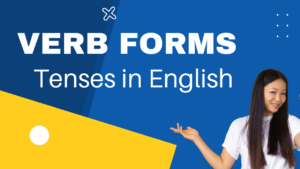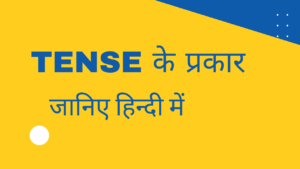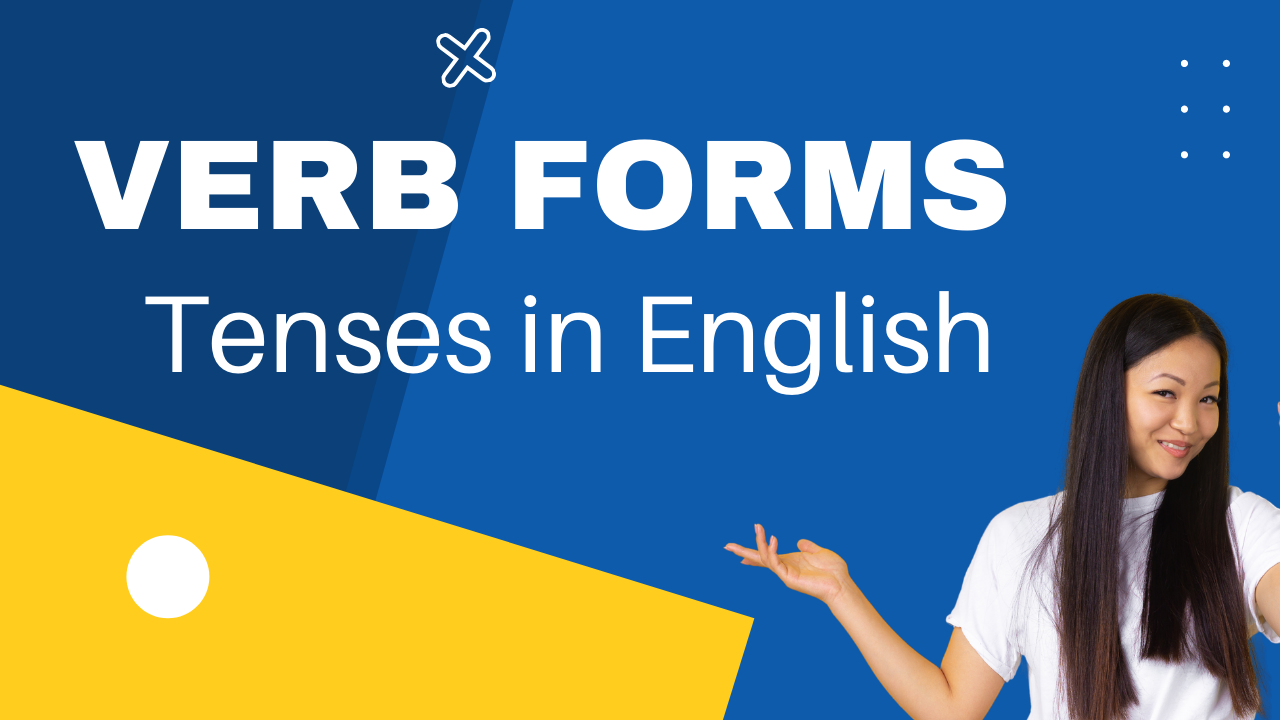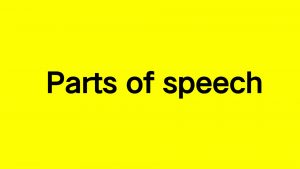If you are an English learner, you will have to be aware of what tenses are. To have a better communication skills and understanding one has to instill confidence regarding tenses in English.

Tenses In English
Time and Tense – अंग्रेजी के ये दो शब्द time and Tense व्याकरण के अंतर्गत बहुत महत्वपूर्ण हैं। Time शब्द एक concept (विचार, धारणा) है जिससे हम परिचित हैं। यह तीन भागों में विभक्त है-
- Past (भूत)
- Present (वर्तमान) and
- Future (भविष्य)
Tense शब्द एक Verb Form (क्रिया का रूप) या Series of Verb forms (क्रिया के श्रेणियों के रूप) हैं जिसका प्रयोग time relation (समय-संबंध) बताने के लिए होता है। Tenses विभिन्न भाषाओं में भिन्न रूप धारण (Vary) करते या बदलते रहते हैं। Tenses बतलाते हैं कि कोई काम , तीव्रता या अवस्था भूत , वर्तमान या भविष्य में हैं। ( an action, activity or state is past , present or future).
Tenses ये भी बतला सकते हैं कि कोई काम, तीव्रता, या अवस्था है, था , या पूरा हो जाएगा अथवा यह है, था, या एक निश्चित समय में जारी रहेगा। ( Tenses may indicate whether an action, activity, or state is, was, or will be completed, or whether it is, was, or will be in progress over a period of time).
English Verbs के सिर्फ दो Tenses होते हैं-
1. Simple Present Tense – He writes.
2. Simple Past- He wrote.
Simple Present Tense का प्रयोग past, present and future time में हो सकता है; जैसे-
How does Mohan earn his living ?
He sells books.
इन वाक्यों पर ध्यान देने से यह पता चलता है कि Verb ‘sells’ present tense में है, किंतु यह Verb मोहन के भूत, वर्तमान तथा भविष्य काल के क्रिया/ कलापों का वर्णन करता है। मोहन ने गत वर्ष भी पुस्तक बेचा था। अभी भी बेच रहा है और भविष्य में भी बेचेगा। अब इस वाक्य को देखें-
The plane leaves from Delhi at four O’clock tomorrow morning.
Verb – ‘leaves’ simple Present Tense में है। यह भविष्य काल की घटना (event) को बतलाता है। अब इन वाक्यों पर ध्यान दें।
I wrote a letter to my mother last week. (Past tense present time)
If I wrote to my mother now, she would receive the letter tomorrow morning. (Past tense, Present time)
If I wrote to my mother tomorrow, she would receive the letter on Monday morning. (Past tense future time)
Time, Tense, aspect and modality
अंग्रेजी व्याकरण में Verb forms के अंतर्गत इन चारों शब्दों का अत्यधिक महत्व है क्योंकि ये शब्द वाक्य के अर्थ को स्थिति के अनुसार स्पष्ट करते हैं।
1. Time and Tense
अंग्रेजी में विभिन्न प्रकार के verb forms का प्रयोग समय में अंतर (difference in time) बतलाने के लिए होता है। जैसे-
I know him very well. I knew him very well. तुलनात्मक दृष्टिकोण से इन वाक्यों में Verb forms जो समय में अंतर बतलाते हैं, Tenses कहलाते हैं।
Tense का निर्माण या तो verb में परिवर्तन करके (e.g. Know, knew, work, worked) या सहायक क्रिया ( auxiliary verb) जोड़ कर ( e.g. will know, had worked) किया जाता है।
2. Aspect-
aspect शब्द का अर्थ होता है, “रूप, भाव, आकृति।’ Verb forms में परिवर्तन, समय भेद (difference of time) के अतिरिक्त दूसरे विचारों या भावों को व्यक्त कर सकता है। जैसे- ‘Perfect’ Verb form का प्रयोग, ‘पूर्णता के भाव’ (idea of completion) पर बल या जोर देने के अर्थ में किया जा सकता है; जैसे-
I have read your book.
My parents lived in Jamshedpur all their lives.
By the end of his tour the prime Minister will have shaken hands with a number of ministers.
Present perfect इस बात की जानकारी देता है कि Past Events किसी ना किसी रुप में अवस्थित है। जैसे-
The Russians have landed on the moon.
I have traveled a lot in America.
The president has been assassinated.
3. Modality-
बहुत सी सहायक क्रियाएं (auxiliary Verbs) सिर्फ समय के अंतर (difference of time) को ही नहीं व्यक्त करती हैं बल्कि ‘Obligation, willingness, possibility or necessity’ इत्यादि भावों या विचारों को व्यक्त करती है। इस प्रकार के अर्थ ( meaning) को व्याकरण में ‘Modal’ कहा जाता है और वे सहायक क्रियाएं जो इन भावों या विचारों (e.g. will, should, must) को व्यक्त करती हैं उन्हें ‘modal auxiliary Verbs’ कहा जाता है। जैसे-
I will stop smoking !
Radha should be here soon.
You might have told me Sohan was ill.
I may come tomorrow if I have time.
I think they should have consulted a doctor earlier.

Kind of Tenses
समय के अनुसार Tense मुख्यत: तीन प्रकार के होते हैं-
- Present Tense (वर्तमान काल)
- Past Tense (भूतकाल)
- Future Tense (भविष्य काल)
अब action की degree of completeness (सिथति) को स्पष्ट करने के लिए उपरोक्त तीनों Tenses में से प्रत्येक को चार भागों में विभाजित किया गया है-
- Indefinite- इस में action की स्थिति निश्चित नहीं होती है।
- Progressive- इससे यह बोध होता है कि काम हो रहा है।
- Perfect- इसमें किसी काम की समाप्ति का बोध होता है।
- Present progressive- इससे यह बोध होता है कि काम पहले से ही जारी है, किंतु अभी भी उसका कुछ शेष भाग बचा है।
इस प्रकार Tense के उपभेद मिलाकर बारह होते हैं जिनका प्रयोग इस प्रकार है-
संरचना:- Table No. 1
Tenses | Simple Indefinite | Continuous Or Progressive | Perfect | Perfect-continuous |
Present Past Future | He plays. He played He will play. | He is playing. He was playing. He wii be playing. | He has played. He had played. He will have played. | He has been playing. He had been playing. He will have been playing |
1. The Simple Present Tense
1. Present indefinite Tense-
जब कोई काम वर्तमान समय में होता हैं ( what is actually taking place at the present moment) तो उसका बोध Present indefinite से होता है; जैसे-
I read.
He goes.
They play.
You laugh.
संरचना:- Table No. 2
Sentence | Subject: I, You, they Noun (plural) | Subject: He, she, it Noun (singular) |
Statement | Sub + 1st form of verb+ O I read a book. | Sub : 1st form of verb+ s/es+ O He reads a book. |
Negative | S + do not + M.V¹ + O I do not read a book. | S + does not + M.V¹ + O He does not read a book. |
Interro. | Do + S + V¹ + O + ? Do I read a book ? | Does + S + V¹ + O ? Does he read a book ? |
2. यदि मुख्य क्रिया (1st form of verb) के अंत में o, ss, ch, x, हो तो + es जोड़कर singular number का Verb बनाते हैं।
Go- goes
Teach- teaches
Pass- passes
Tax- taxes
Wash- washes etc.
3. यदि मुख्य क्रिया के अंत में Y हो और उसके पहले कोई consonant हो तो, Y को हटाकर +ies जोड़कर singular number का Verb बनाते हैं। जैसे-
Marry- marries
Carry- carries
Fly- flies etc.
Simple present Tense का प्रयोग नीचे दिए गए अवस्थाओं में किया जाता है
- वर्तमान समय में ठीक ठीक घटना प्रकट करने के लिए ( to express what is actually taking place at the present moment) प्रयोग किया जाता है।
- सामान्य सत्य को बताने के लिए ( to express general or universal truth)
- आदत या रिति-रिवाज को बताने के लिए (to express a habitual action or custom) इसका प्रयोग होता है।
- भविष्य काम को बताने के लिए (to express a future action, when the futurity is indicated by the context)
- भूतकाल की ऐतिहासिक घटना की स्पष्टता को वर्तमान काल में प्रकट करने के लिए ( to express vividness of the past events in narration i.e., historic present)
2. Present Continuous Tense (Progressive)
इस Tense से यह बोध होता है कि कोई काम वर्तमान या मौजूदा समय में हो रहा है अथवा बोलने के समय तक काम अभी जारी है (an action is going on at the time of speaking) जैसे-
I am doing my homework.
My father is taking his bath.
Look ! Mohan is running.




